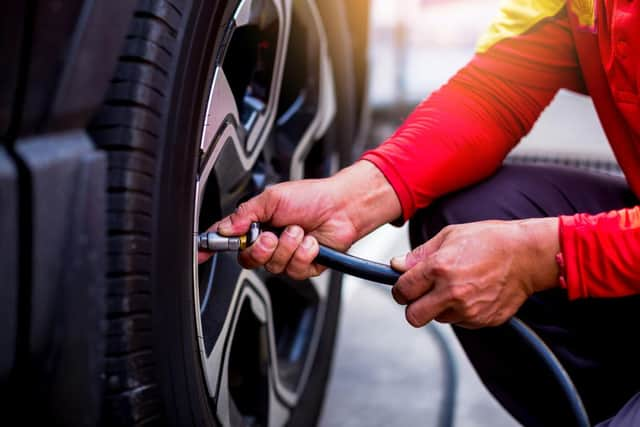Preparing your car for driving after lockdown


Drivers around the UK are being encouraged to ensure that they and their cars are prepared for a return to the road after lockdown.
Lockdown restrictions are set to ease in the coming weeks but recent months have seen many cars being used rarely or not at all, meaning drivers need to carry out some basic checks before heading out.
Advertisement
Hide AdAdvertisement
Hide AdData from the Driver and Vehicle Standards Agency (DVSA) shows that the number of cars presented for their MOT with basic defects such as damage or faulty headlights or tyres has risen significantly since the first lockdown and there are fears many more drivers will soon be taking to the roads again without checking for such issues.


To help stay safe and avoid unnecessary damage to your car there are a few simple checks you can carry out at home. If you are in any doubt about how to do them or have concerns about your car’s condition, have it examined by a professional mechanic.
Under-bonnet checks
It pays to make sure all your car’s fluids are topped up, especially if it has been sitting idle for a prolonged period. Check the oil, brake fluid and power steering fluids are all between the minimum and maximum markers on the reservoir and make sure you have plenty of good-quality screenwash. At the same time, check the condition of your windscreen wipers, making sure the rubber isn’t perished or damaged.
Tyres and brakes
Give your tyres a visual inspection, checking for any unusual cracks, splits or bulges. Any of these could lead to a sudden tyre failure, so it’s important to have any damaged tyres replaced immediately. Also check for tread depth. The legal tyre tread depth for cars is 1.6mm. Turn the steering wheel fully to the left or right. Look for the treadwear indicators which are at the bottom of the tyre grooves. If they are flush with the level of the tread, you need to replace the tyre. Another good rule of thumb is the 20p test. Insert a 20p coin into the groove on the tyre. If the tread covers the outer band of the coin the tyre depth is legal. Check the tread depth is even across the tyre.
Advertisement
Hide AdAdvertisement
Hide AdCheck your tyre pressures too. Many cars have a sticker on the door sill or inside the filler cap with the correct pressures but if in doubt, check your owner’s manual. Correctly inflated tyres are better for fuel economy as well as being safer than under or over-inflated ones.
Look for obvious signs of wear or damage to your brakes. If the car has been stationary for an extended period or only used for short trips, a thin layer of rust is likely to have formed. This can be removed by gently pushing the brake pedal several times while the car is travelling at a slow speed and when the roads are clear of other traffic. If your brakes judder or pull, you should have your car checked by a professional.
Lights
Although the days are getting longer, it’s still a legal requirement to make sure all your car’s lights are working. It's easiest to get someone to help you with this but you can check them on your own as well. Turn on all the lights and walk around the car, take time to activate indicators and fog lights as well as the main/dipped headlights and tail lights. You can test brake lights by reversing up to a garage door or window and pressing the brake. Look for a reflection in the rearview mirror.
MOT and licence
Unlike during the first lockdown, there is no MOT extension in place so if your car’s MOT has expired during the current lockdown you will have to have it tested before using it. After the first lockdown and extension ended MOT centres saw a huge rush for tests, so make sure you give yourself time to book an appointment.
Advertisement
Hide AdAdvertisement
Hide AdThe previous licence renewal extension has also ended so if your licence was due to expire from January 1, 2021 you will need to renew it before driving . Anyone who benefitted from the 11-month extension announced last year will need to check their new renewal date.